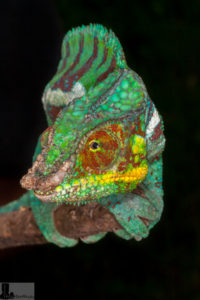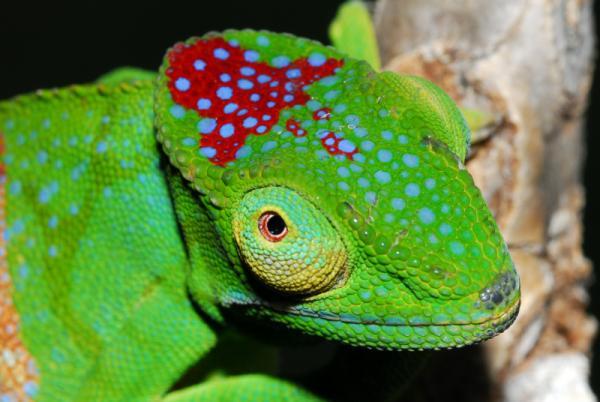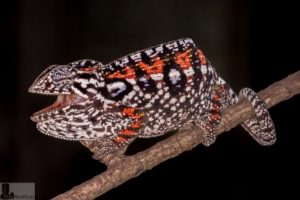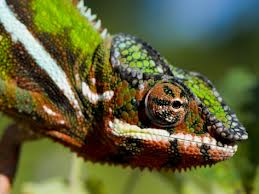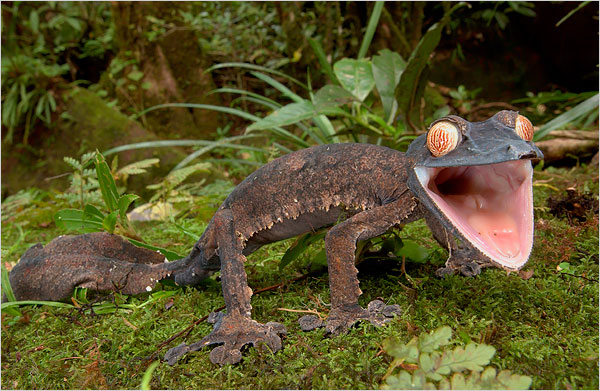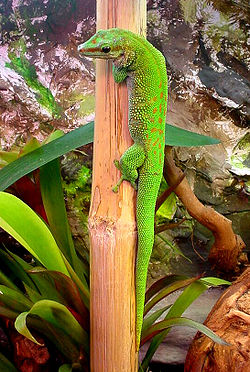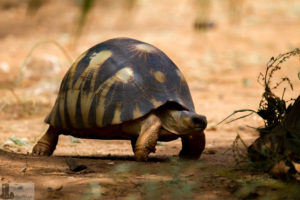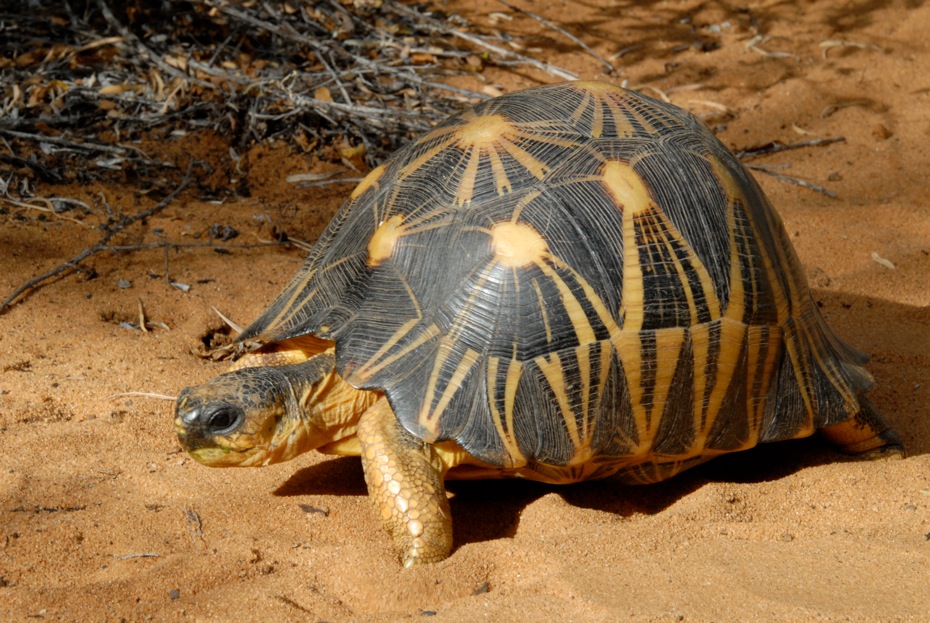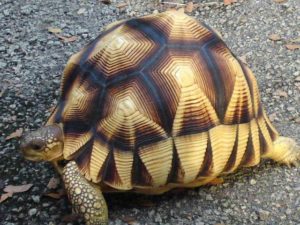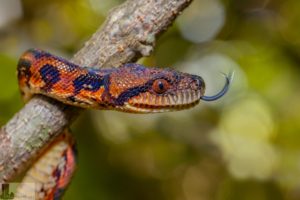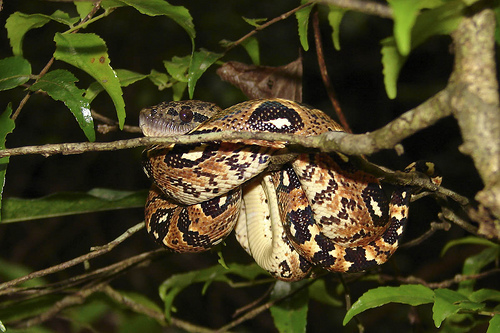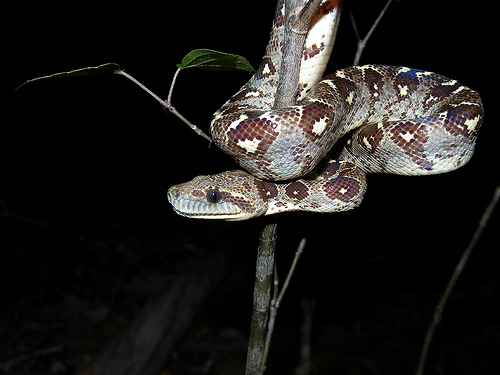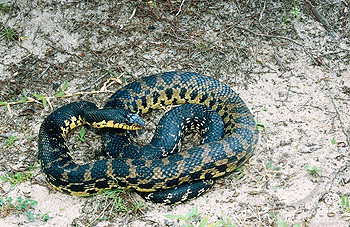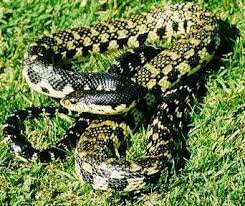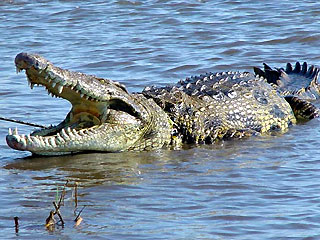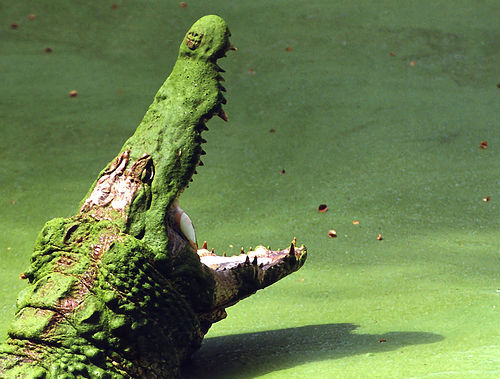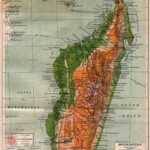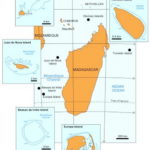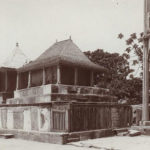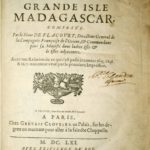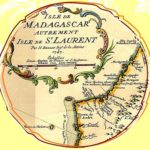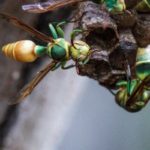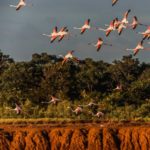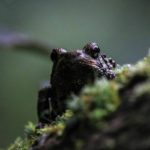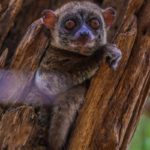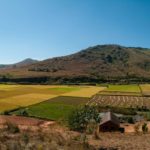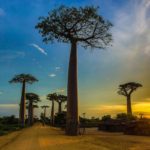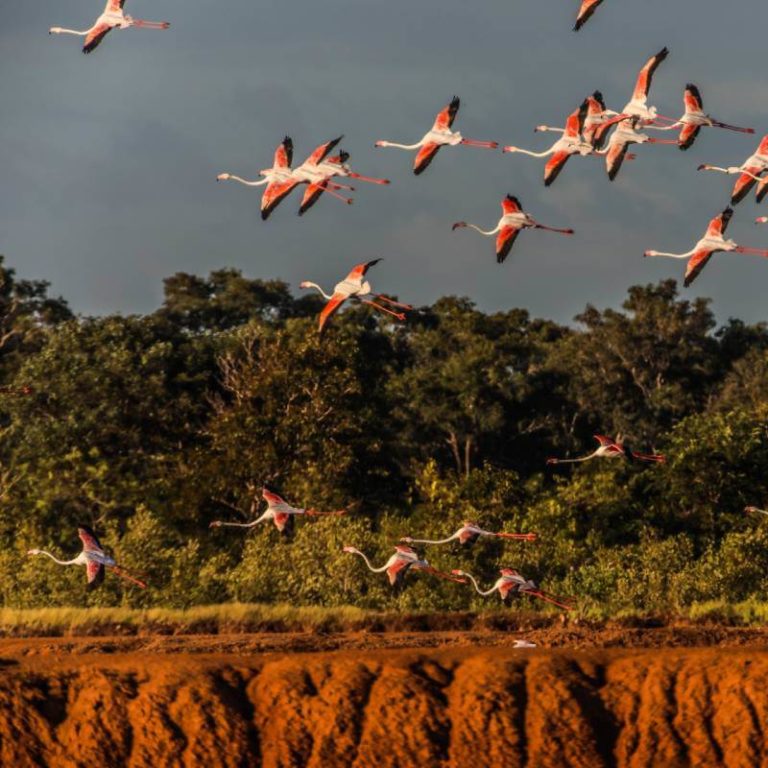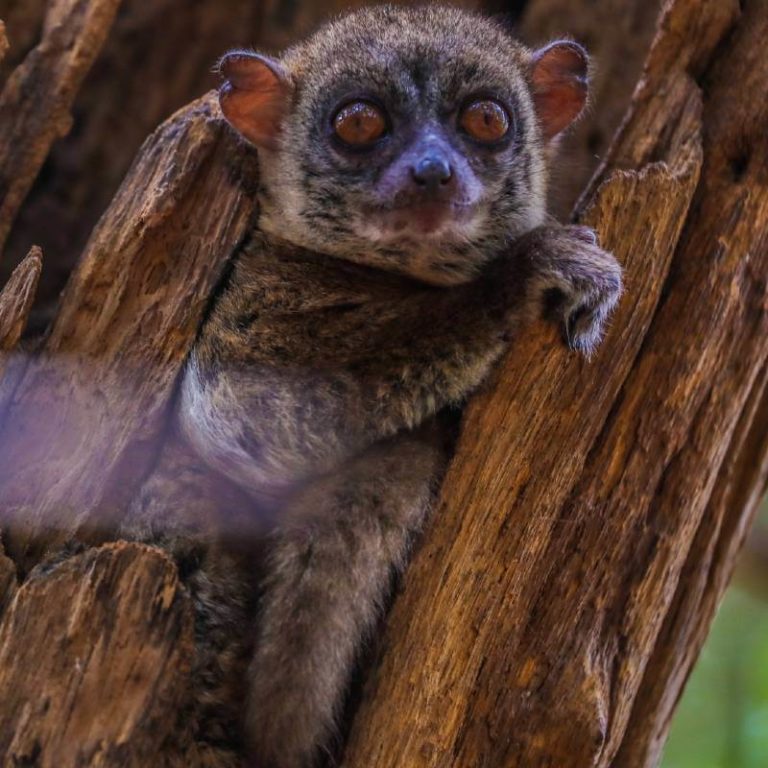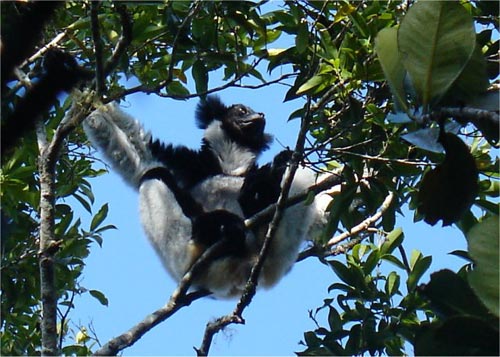The reptiles of Madagascar
For all lovers of lizards, geckos, iguanas and co. Madagascar proves to be a true paradise. Every year numerous researchers, herpetologists and lizard lovers come to Madagascar to observe the numerous different species in the wild. The Reptile diversity in Madagascar is almost unique in this world, because nowhere else could so many different species almost completely without natural enemies develop. The fact that Madagascar was settled by humans relatively late has also contributed to the fact that the Reptile diversity in Madagascar could become so large. Since in Madagascar virtually no poisonous reptiles or snakes it turns out to be a real pleasure to observe the different animals in their natural habitats, as there seems to be no danger waiting for humans. In total there are in Madagascar more than 400 different species of reptiles to discover from which more than 95 percent as endemic classified have been made. With the Amphibians it is even 98 percent of all species that are found nowhere else but on Madagascar. Particularly shocking: Nearly 40 percent of the reptile species native to Madagascar are now threatened with extinction and were already included on the Red List of endangered species several years ago. The protection of the animals is therefore of enormous importance in order to Biodiversity in Madagascar to be able to maintain With a Trip to Madagascar you can contribute a part to the protection of these species, since for example the entrance fee of many national parks is reinvested directly into nature conservation. But that alone is not enough of a reason for a Madagascar vacation probably not enough. A Madagascar vacation offers you the possibility some of the rarest and most exotic animal species in the world to get to see. We will accompany you on your tour across the island and help you to encounter impressive animals and reptiles in their natural habitat. For your individual wishes you can easily contact us.
What reptiles are there in Madagascar?
The number of reptile families in general is very large and Madagascar is home to many of these families. The following overview can in no way provide information about all the Reptile species in Madagascar grant. Instead, in the first place, the different families will be briefly introduced and described with some particularly interesting information. Where it is worthwhile, different specimens of the individual families or species are also presented. Basically exist on Madagascar
the following families of reptiles:
- Tortoises
- Aquatic turtles
- Sea turtles
- Chameleons
- Iguanas
- Skinke
- Gekkos
- Boas
- Adders
- Ground and slow worms
Chameleons in Madagascar
Chameleons belong to the so-called Scale crawlers and all in all, Madagascar is home to more than 50 different species find. This is especially special because there are only 200 different described species worldwide so far. A quarter of the total chameleon species is accordingly available on the Madagascar island at home. Chameleons also play for the People in Madagascar an important role, various Myths and stories are entwined around the extraordinary animals.
The independently movable eyes are one of the most important features of the chameleons and it is claimed that the animals can with these eyes simultaneously see into the future and into the past. In fact, however, the eyes that can be moved independently of each other are so important exclusively because they provide the animals with a complete all-round view make it possible. How exactly this works in detail and which brain functions are necessary for this is still a mystery to many researchers today.
Besides the visual apparatus, however, it is also the extraordinary tongue with which
Chameleons in Madagascar
Chameleons talk about themselves. This tongue is also called Skidding tongue designated. The slingshot tongue can be a enormous traction and become up to one and a half times as long as the chameleon itself. The slingshot tongue can best be compared to a rubber band, which proves to be elastic. The so-called Tongue shot, with which the slingshot tongue speeds outwards, is within one tenth of a second so that the prey normally have no chance to escape. However, the tongue does not simply slay the prey with its enormous tensile force, but forms a kind of cavity shortly before hitting the prey. This process allows a small suction which in turn sucks in the prey. A sticky secretion on the tongue also plays a part in ensuring that once a prey animal has been snatched, it can no longer escape.
After the tongue and the visual apparatus, it is above all the Chameleons skin, which has helped this animal to achieve worldwide fame. The Color changeThe color change that the skin can perform is characteristic, but for many years it was completely misinterpreted. Thus, even today, many people believe that the chameleons can change their color, thereby camouflaging themselves better.
In fact, however, this function is very secondary, because the color change is primarily used for communication purposes. Camouflage do the chameleons on Madagascar clearly more strongly, in that they with their body Imitate leaves or branches. In this context, they remain almost motionless for a very long period of time. This simple trick is especially important because it is the best way for the chameleons to catch their prey. Mimesis and Thanatosis are two important terms in this context, with thanatosis being more of a defense. Here it concerns a Rigor mortisThe chameleons fall into this trap when approached by a predator. If they are touched, they fall down directly. Madagascar is home to the stub-tailed chameleon and the dwarf chameleon as well as the large chameleon.
Some Stub-tailed chameleons are so small that they can comfortably sit on a match. The forest floor is usually the perfect home for these chameleons and because of their small size they are difficult to find. Therefore, if you want to discover these particularly small and cute animals, you should always rely on an experienced guide.
With the Large chameleons even inexperienced tourists without a guide sometimes have more luck, even if these chameleons are also not always necessarily easy to recognize. But instead these species inspire with their exciting color games. By the way, it is strongly advised not to try to touch a wild chameleon without thinking about it, because the animals fight back with vigor and then they can also bite. The Giant chameleon is one of the most extraordinary chameleons, since it is considered a the largest in the world is valid. It is also often referred to as Madagascar giant chameleon referred to as the Madagascar Giant Chameleon, as it is native to the forests on the island. The Madagascar giant chameleon can be up to 70 centimeters long and therefore offers an imposing and unforgettable sight.
Geckos in Madagascar
Geckos have been at home on this earth for about 50 million years, surpassing humans and many other species many times over. The secret of the gecko's success lies in their maximum adaptability. This also ensures that the geckos are found in virtually all parts of the world. In Madagascar live Nine different species in total From geckos, some of which are more and others less known. The Taggeckos or phelsumen are relatively widespread on Madagascar. The special thing about this genus is the fact that many day geckos, as the name already makes clear, very active especially during the day are. The different subspecies each present themselves with their own unique coloration. Thus there are different day geckos, whose skin is colored quite simply green, and others, which show relatively complex color patterns. Day geckos like to eat insects and invertebrates and sometimes also pollen and nectar. It is assumed that most day geckos, which can be discovered today on many islands in the Indian Ocean, originally came from Madagascar. There can be found even today the largest deposit of this gecko genus.
But not only the Day geckos are at home in Madagascar: In total you will find more than 70 different species on the island. Most of them are Extremely flexible and very nimble on the road. This can be seen, among other things, on the so-called detention cells which they have at the ends of their fingers. Geckos are usually not necessarily shybut are driven by their appetite and hunger. That is why they are not seldom found in hotel rooms. However, tourists and locals are rarely piqued when they discover a gecko in their hotel room, because in this case there are automatically fewer mosquitoes and other insects in the room.
Also the Geckos family is once again subdivided into different genera. Here there are nine of them. The individual genera and their representatives differ partly extremely in physique and behavior. Also they inhabit completely different habitats and very different microclimates. We find in the family of geckos from Madagascar the following genera:
Blaesodactylus, Geckolepis, Hemidactylus, Paragehyra, Matoatoa, Paroedura, Uroplatus, Lygodactylus, Phelsuma
Probably the best known, because also the best to find representatives of this family, are the genera Phelsuma, Uroplatus and Paroedura.
The genus Phelsuma also bears the name in German-speaking countries Madagascar day geckos. Already in the naming is one of the main differences to the other two genera mentioned. In contrast to the Uroplaten and Paroedura the Phesumen are diurnal. Except for a few species, very strikingly colored animals can be found in this genus. Mostly the basic color is a strong green, which is supported by blue, red or also yellow color elements. Only a few species like Phelsuma guentheri are rather gray and inconspicuous colored. The best known species among the phelsumens is certainly Phelsuma grandis, which can reach a size of up to 30 cm.
The genera Uroplatus and Paroedura are both nocturnal and thus somewhat more difficult to find. In terms of coloration, they are much less intense animals than those from the genus Phelsuma. Among the species of the genus Uroplatus the most conspicuous representative is certainly Uroplatus giganteus. This "gigantic" gecko is one of the largest geckos in all of Madagascar. The animals can grow well over 30 cm and captivate with their white eyes.
Unfortunately, they are found only in a very small habitat, which also causes some endangerment of the species. Probably the most extraordinary gecko you can look for on Madagascar and with a lot of luck and some sweat also find is Paroedura masobewhich is also called Alien Gecko. The oversized black eyes are here probably name-giving.
Geckos in Madagascar
With over 70 types is the family of Geckos even more species-rich than that of the chameleons - and by one of its representatives, the world-famous large Madagascar Day Gecko Phelsuma madagascariensis almost as well known. Geckos have adhesive cells at the ends of their fingers, which gives them amazing freedom of movement in all directions. Especially the day geckos Phelsuma madagascariensis and Phelsuma grandis are very often found near dwellings. Also in hotel rooms in the coastal regions the presence of geckos is almost normal - and extremely useful in addition, the animals eat mainly insects like mosquitoes!
Almost as well known are the Flat-tailed geckos like Uroplatus fimbriatus. These geckos are able to perfectly adapt to the substrate their environment due to their flat body and head shape and leaf-like tail. In addition, the ability to match the skin color of this environment. This makes the gecko almost invisible and can only be spotted with a very trained eye or a good guide on the tree trunks where it sits head down. Since it is nocturnal, it is most easily spotted with a flashlight by its large, shiny eyes, which it sometimes licks clean with its tongue.
The flat-tailed gecko always has its head down because birds of prey, the gecko's main enemies, like to grab the prey's supposed head when it swoops down. In the case of the flat-tailed gecko, on the other hand, the predator only gets a piece of the tail. The head of these animals bears a strong resemblance to a small crocodile. Of course, the gecko is able to hold on excellently with its adhesive feet.
Book Tips / Net Tips
Those traveling to Madagascar should generally always familiarize themselves in advance with the nature that awaits them. Special information about the Herpetology can be found, for example, in the following books:
– A Field Guide to the Amphibians and Reptiles of Madagascar (Paperback - October 2007 by Frank Glaw & Miguel Vences
– Geckos Madagascar, der Seychellen, Komoren und Maskarenen /Geckos of Madagascar, the Seychelles, Comoros and Mascarenes (English) Hardcover - May 15, 2008 by Patrick Schoenecker
- On the net the EMBL Reptile Database (worldwide)
- The side of the IG Phelsuma, a combination of Herpetologists and ambitious terrarists
Skinks on Madagascar
Skinks are also often referred to as Glattechsen and are relatively common in Madagascar. In total there are worldwide more than 1,500 different types of skinks, which makes them the most species-rich lizard family in the world makes. The Skinks on Madagascar are so far only little researched. What is clear is that several species of this family are native to the island, that they like to lie on the ground in the sun and warm themselves, and that they are never drawn far from a watering hole. Some skinks on Madagascar have a tail, which is equipped with small spines. Also striking are the typical wave movementsSkinks move around in them because of their short legs. Often skinks because of this also confused with smaller snakes.
Iguanas: Among the many curiosities of Madagascar's fauna is the presence of iguanas. Like boas, iguanas are found only in America and on some South Sea archipelagos. How representatives of these species came to Madagascar is one of the exciting mysteries of the red island.
Two species of iguanas live in Madagascar:
- Chalarodon with one species
- Oplurus with six species
Shield Lizards or belt lizards are represented on Madagascar with two species:
- Zonosaurus
- Trachoptychus
As with the skinks, almost nothing is known about their life and distribution.
Turtles in Madagascar
In Madagascar there are five species of tortoiseswhich can be discovered actually distributed over the complete island. However, this also means on the other hand that Their existence is severely threatened in many habitats is. The increasing human settlement on the island and also the clearing of the rainforest are not without consequences for the tortoises. In addition there is a further danger: Some tortoises are unfortunately still considered a real delicacy.
In this context, area-wide coverage has already been provided via all turtle species on Madagascar the nature conservation imposed. Accordingly, it is forbidden to hunt or kill them. Nevertheless, some of the tortoise species have such a small population that the survival of this species hangs by the proverbial thread or at least on very specific breeding programs.
The tortoises include, for example, the Madagascar ray turtleTheir males can weigh up to twenty kilograms. Also worth mentioning is the so-called sister turtle of the Madagascan ray turtle, the so-called Madagascar beaked breast turtle. This species of turtle is particularly rare and researchers estimate that currently a maximum of only 770 copies left exist on the island.
The Freshwater turtles are divided into several species and subspecies. They are mainly at home in the rivers and lakes of Madagascar and are sighted rather rarely by tourists. Many of these species are Not endemic and it is believed that most of the ancestors of the southern water turtles native to Madagascar today are originally from Africa originate
Sea turtles: as the sea turtles Cheloniidae like the loggerhead turtle, the true hawksbill turtle, the Pacific green turtle and the bastard turtle live in the sea and only come to the shores of the red island to lay their eggs, they are not to be considered typical for the country. Therefore, our interest turns primarily to the land tortoises (Geochelonae) of Madagascar.
Tortoises: these are native to almost all parts of the country, but their existence is increasingly threatened. Not only the practice of slash and burn kills many animals every year, but also as a delicacy and meat supplier the partly quite large animals are popular and are therefore caught and eaten. All turtles of Madagascar are under strict protection. Some species are so rare that their survival is linked to breeding programs and therefore questionable!
Malagasy Radiated Tortoise:Geochelone radiata, also called Asterochelys radiata, in malagasy sokaky. This species may be considered one of the heraldic animals of Madagascar. Their beautiful bright Ray pattern on the darker colored carapace plates make them unmistakable.
The basic color varies from almost black to light brown, whereby young animals are basically more contrasting and sharper marked. There are also specimens that are so brightly colored that the pattern is only very blurry visible. Geochelone radiata prefers dry terrain and can also be found in deciduous forests. It feeds on flowers, fruits and leafy food. The animals grow to a length of about 40 - 45 cm and weigh up to 20 kg! Especially the strongly bulging back carapace, which reminds of a steel helmet, makes the massive appearance of these animals.
The ray turtle may be demonstrably considered one of the longest-lived species on our planet: a ray turtle owned by the King of Tonga, named Tu Malila, died in 1965: the animal had been killed in 1773 by Captain James Cook presented as a gift to the Queen of Tonga!!! Admittedly, Tu ́ Malila was blind in the last years of her life and had to be fed, which is a death sentence in the wild. Nevertheless, this example testifies to the incredible vitality of this species and therefore makes its use as food or prepared dust catcher seem particularly reprehensible and inappropriate.
The World's highest density of this type can be found not far from the Cap. St. Marie at the outermost South coast Madagascar. In addition, the species is kept in private homes and hotels throughout the country: a tropical garden in Madagascar gets the country's typical zing by a peacefully grazing ray turtle.
Beaked-breasted turtle:Geochelone yniphora, also called Asterochelys yniphora, in malagasy angonoka. This species, closely related to the ray turtle, is without doubt the rarest and most endangered turtle species on our planet. Only 250 specimens are believed to still exist in the wild, so a special breeding program has been maintained for years. The reserve for this can be found about 100 km east of Mahajanga in Ampijoaroa, near the Ankarafantsika-NP.
The turtle can be recognized primarily by the typical bony process at the front end of the abdominal carapace. Not unlike the antlered big game, the males use this "ramming spur" in the fights for the favor of females willing to mate. This can be quite noisy and the knocking sounds can be heard over great distances. Asterochelys yniphora reaches with 45 cm carapace length almost the same size as its "radiant" conspecific. The animals are of light brown color, sometimes contrasted by dark spots.
Spider tortoises with two subspecies:
Flat-backed turtle: Pyxis planicauda, on malagasy kadipolo. Also P. planicauda carries a kind of star pattern on the dark carapace plates, but these carry an even lighter border, which makes the color contrast not as strong as in G. radiata. In addition, the species is much smaller: with only 18 cm carapace length it belongs to the smaller turtle species. P. planicauda lives very isolated in an area at the west coast north of Morondava, where it prefers dry forests and is rarely seen. The best opportunity is provided by the very sparse rainfall here. Then the animals come out of their shelters to drink.
Spider Turtle: Pyxis arachnoides is like its close relative, the Flat-tailed tortoise, threatened with extinction, yet it can be found in a fairly extensive range. The southern part of Madagascar with its Thorny forests and the Succulent scrub is their home territory.
Rail Turtle:Erymnochelys madagascariensis is an extremely rare species, found only in a few refugia in the northwest or in the Ampijoroa Reserve (Ankarafantsika-NP near Mahajanga) can be found.
Articulated turtle:Kinixys belliana. This species, mainly found in northern Madagascar and on Nosy Bé was probably introduced by early settlers - after all, turtles were a sought-after meat reserve for seafarers in earlier times.
Freshwater turtles: in the rivers and waters of Madagascar are also found several species of Pelomedusan tortoises (Pelomedusidae) with at least three subspecies: P. castaneus, P. subniger and P. surufa. The pelomedus turtles are also not a native species. Since their closest relatives are found on the African continent, the assumption is also here that the animals were once introduced to Madagascar.
Snakes in Madagascar
Many travel guides claim that there are no snakes in Madagascar. Fortunately, this is not entirely true. More correct is that there are on Madagascar there are no snakes that are dangerous to humans could become. There is only one kind of poisonous snake, but it is completely harmless and peaceful, it is not aggressive and does not have the possibility to reach any part of the human body with its poisonous fangs that are very far back in the throat.
There are three types of giant beatswhich are to be classified in the family of the Boas. These snakes are normally at home in Central and South America, which is why it is all the more interesting that three native species have also been discovered on Madagascar: The Madagascar Doghead Snake with a strikingly beautiful coloration and a maximum length of 2.50 meters, the Northern Madagascar Boa, which can grow up to three meters long, and the Dumerils Boa, which is considered to be exceedingly peaceful.
Besides there are 60 other snake species on Madagascar, but all of them are not very poisonous and are also considered shy and lazy to bite. The Madagascar snake is probably one of the most famous snakes on the island, as it has a eye-catching nose cap from elongated scales has. This snake can grow up to 1.50 meters long, but is usually not dangerous to humans either.
Giant snakes
With three species represents the family of Giant snakes, the Boidae, on Madagascar is another strange fact. Thus, the complete absence of Pythons (Pythonae) despite the geographical proximity to Africa already amazing. But even more astonishing is the fact that the giant snakes represented on Madagascar are Boa snakes (Boinae), which are otherwise only found in South America!
Boids seize their prey by a lightning-quick advance of the front body with a large number of pointed teeth in the wide-open mouth. They then yank the prey to their body and at the same time completely engulf it in an instant. The victim dies by cutting off the blood circulation (and not by breaking and crushing the skeleton!).
Madagascar doghead slider: Sanzinia madagascariensis. Like its closest relatives in South America, the strikingly beautifully colored boa has a heart-shaped head that stands out clearly from the slender neck. It grows up to 250 cm long, is gray to olive green in color and bears a regular pattern of transverse bands on the stocky body, which expand to lozenges on the flanks.
The snake is crepuscular and almost always found near enough water. It often lies on the paths and roads on rainy evenings. It feeds on small mammals and birds. According to Trutnau, individuals from the western part of Madagascar behave very peacefully. In contrast, animals from the eastern part of the island are very aggressive and eager to bite.
Northern Madagascar boa:Acrantophis madagascariensis. The Madagascar boa resembles very much the South AmericanBoa constrictor. It grows up to three meters long, is of strong build and has a distinct triangular head. It is brown on the back with light sides. It bears a typical pattern of oval, very dark spots on both sides of the back, which merge towards the belly with round spots of brown color.
A dark stripe goes from the temple to the corner of the mouth. The ventral side is creamy white with small dark spots. It is also crepuscular and lives on small mammals and birds, which it seizes with lightning speed. In the Andasibe-NP the author could pull out several years in succession at the same place in each case an A. madagascariensis under a decaying concrete wall, where it had curled up in the cool.
Dumerils Boa:Acrantophis dumerili. The dumeril boa strongly resembles its close relative, the Madagascar boa, but unlike the latter prefers dry terrain. The snake is usually peaceful and lazy to bite. To the astonishment and horror of the guides present, the author was able to "unwrap" an A. dumerili from the leaves of a small palm tree in Isalo NP without any effort or danger.
Snakes from madagascar
It will reassure many people interested in travel that in Madagascar there are no real poisonous snakes exists! Although some have Dream snakes of the Boigina family have venomous fangs located far in the throat, but these are rarely sufficient for a real venomous bite with alarming consequences. Moreover, most snakes are exceedingly fast and shy and therefore difficult to seize.
About 60 different species of snakes are known in Madagascar.
Since the diversity among the Snakes of Madagascar especially appeals to specially interested travelers, reference should be made to the diverse literature and only the most famous and common snake...
Madagascar snake: Lioheterodon madagascariensis. The snake, up to 150 cm long, is strikingly dark, almost black in color and bears a yellow banded pattern on its back.
Although it is crepuscular, it can sometimes be seen lying on the clay soil of a trail on sunny days, where it warms up. When cornered, the animals make a loud hissing sound and flatten their torso.
More information about snakes in Madagascar can be found at this Link
Crocodiles in Madagascar let you discover. With our Nature travel we always work with very experienced and English-speaking guides, who are very knowledgeable about Biodiversity and Habitats are well trained. If you need a Trip to Madagascar undertake and on the island your Vacation want to spend, then you should follow the World of reptiles definitely treat yourself to a detour. We will be happy to advise you in this regard. Profit from our special and individual travel offers and talk to us right away.
The Nile crocodile – Crocodylus niloticus madagascariensis reaches in its nominal form on the African continent exceptionally eight to nine meters in length - such giants are hardly to be found on Madagascar. After all, the crocodiles of the red island give quite stately appearances with a body length of up to six meters.
Exposed to a merciless hunt, they have become rare nowadays. At Tsiribihina one sees them with much luck with sun at the shore. In the remote regions of the northwest, they are said to still exist in large numbers in the rivers, although they are poached and decimated here as well.
Thereby are Crocodiles not limited to the coastal and low-lying regions: on the Mananatanana River, which is not far from the village Ambalavao flows by in the middle of the highlands, crocodiles can be seen near the wineries on the rocks on the bank in very sunny weather.
In some places, moreover, they are sacred (e.g., at the Lac Sacre) and therefore even easier to look at. If you want to see some for sure, a visit to the Crocfarm near Antananarivo, to Madagascar Exotique/Peyreras or (most exciting) to the Vakona Zoo in Andasibe is recommended.

